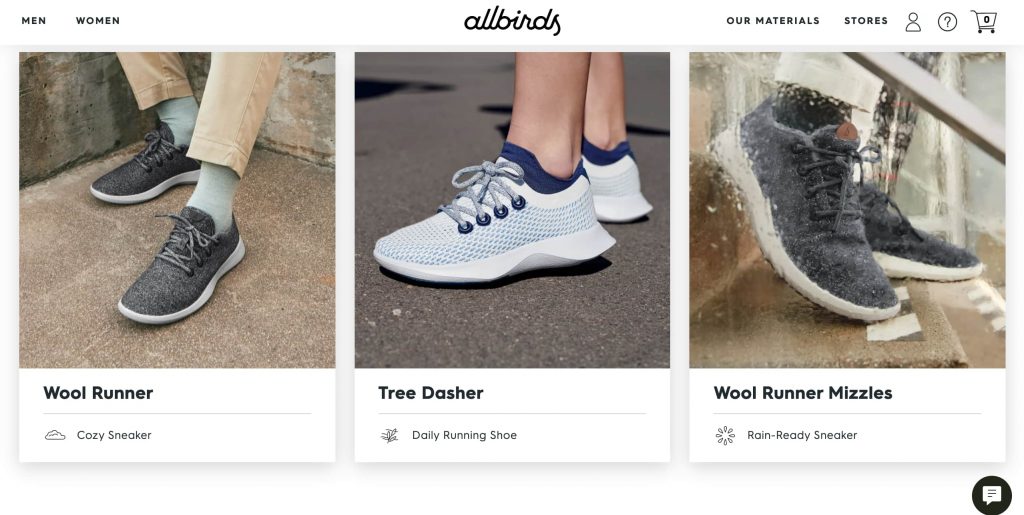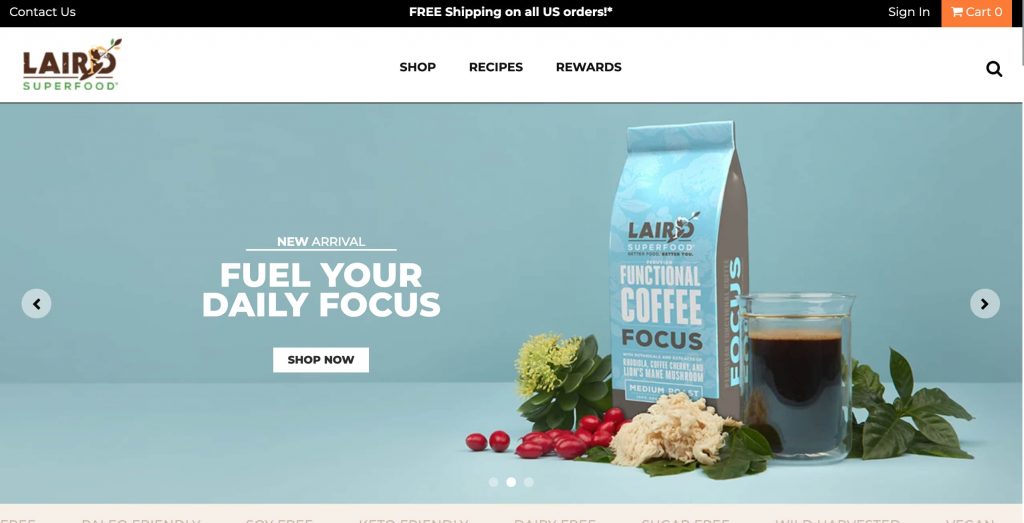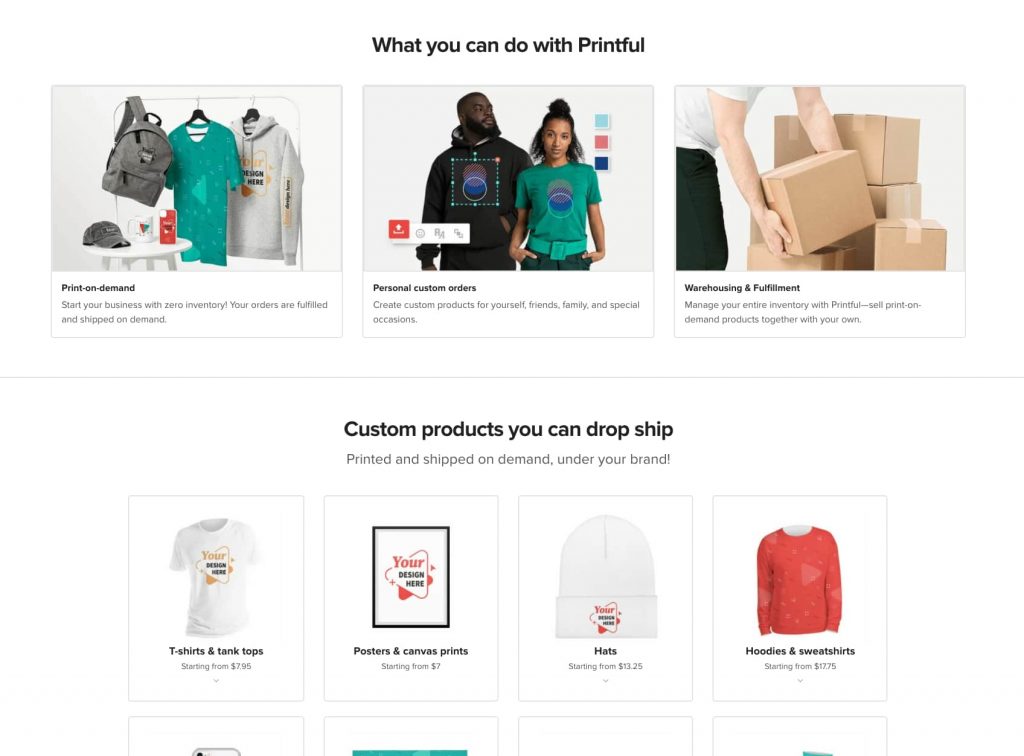When was the last time you purposefully purchased something in a brick-and-mortar store? My guess is at least a few years ago. Why? Because online shopping, or eCommerce, has changed the way we consume forever.
It was projected that eCommerce sales would make up 15% of total purchases in the US by 2021. And here we are, witnessing a whopping 21.3% in 2020. Considering the many, many types of eCommerce business models surfacing still, we can safely assume the percentage will just keep on rising.
And if you’re a business owner/founder, it’s now easier than ever to turn your ideas into reality. Businesses are constantly defying the old ways and moving on to make the big bucks.
But before you try to innovate and exceed expectations, you have to learn the ropes and know your types of eCommerce models. So, in this article, we’ll guide you through the key types of ecommerce business models as well as give you examples of each type, including some innovators. Let’s start!
I. Traditional eCommerce business models
01. C2C – Customer to Customer
C2C is an eCommerce model where consumers are free to trade goods and services with one another in an online environment. Most popular examples include Craigslist and eBay – the pioneers of this model in the early days.
The way C2C businesses make a profit is through charging transaction fees or listing fees.
This eCommerce model benefits a lot from motivated buyers and sellers, who help it grow while earning for themselves. But that is not to say operating a C2C business is easy, for you will have to face the big competitors since this model has been around quite a while. And to attract the most consumers, you will have to pay extra attention to tech maintenance as well as quality control; the last thing you want is a PR nightmare.
02. B2C – Business to Customer
This is the utmost wide-known and traditional type of eCommerce model. B2C businesses sell their products and services directly to their customers. Traditional brick-and-mortar stores are the perfect examples of this business type. And regarding eCommerce, have you ever ordered anything from Amazon?
Anything you buy in an online store, literally anything, can be considered a B2C transaction. B2C businesses don’t have to spend as much on marketing when compared to B2B since most services and goods they offer have much less value. Think about it, it’s much easier for you to decide you want to buy a new pair of headphones than for a company to make a decision to purchase service from a new water caterer.
But a shorter sales cycle means B2C businesses will have to make the extra effort at maintaining good relationships with their customers. Since Word of Mouth marketing has become more and more important in brand advocacy, it’s wise to invoke positive emotional responses from consumers.
A large majority of eCommerce businesses use B2C models, like this one:

or this one

Read more: Best B2C Online Stores For Inspiration
03. B2B – Business to Business
B2B is a form of transaction between businesses, typically involving manufacturers and wholesalers, or wholesalers and retailers. In the context of eCommerce, it usually comes down to buying and purchasing services. One of the most popular examples is, you guessed it, Amazon, offering businesses a platform accessible to customers.
Another example is Samsung, which plays an important role in Apple’s production of the iPhone (ironic, right?)
B2B transactions have a longer sales cycle since they deal with higher-value services, often with recurring orders. Careful planning and effective communication help this type of eCommerce business succeed. Such interactions rely on a company’s account management personnel, ensuring professional business relationships.
B2B innovators are aiming to improve their eCommerce storefronts and targeting niche markets. You can find all sorts of niche businesses like CRM software and animation for eLearning. If you are planning to enter this playing field, do keep in mind that the decision-makers are getting younger, with 73% of millennials are involved in the tech purchasing process for their companies, and a third is actually the decision-maker. Stay up-to-date if you want to succeed.
Another example of B2B eCommerce is Lair Superfood. They sell to both consumers (B2C) and businesses (B2B). A B2B eCommerce website typically requires more resources and larger investment than B2C, since you need a more powerful backend management system to handle wholesale order management, warehouse and inventory management, etc, or to create an automated wholesale portal that customers can access anytime they like.

04. B2B2C – Business to Business to Customer
This type of eCommerce business model is a bit funny, for it is actually a combination of B2B and B2C, instead of its own standalone. In essence, B2B2C is a collaboration between 2 businesses that create mutually beneficial service and product delivery channels.
To further clarify this model, Business A who is developing a product, partners with Business B who provides a specific service – an eCommerce website. Business B has access to many consumers and therefore provides Business A with many leads and sales, making Business A’s product accessible to many customers. What does Business B remind you of? Yes, Amazon again. And Business A is just any other vendor on Amazon like Samsung or Apple.
05. P2P – Peer to Peer
A P2P service is a decentralized platform where consumers can interact directly with one another without the middleman. This enables them to transact directly with one another.
Without the presence of a third party, there’s a greater risk that the service provider/seller may fail to deliver, or the buyer may not pay. The risk is to replace added transaction fees. Hence, P2P platforms offer services to ensure quality of the transactions like payment processing, information about buyers and sellers, and quality assurance to their users.
Popular examples of P2P services are online marketplaces like that of Facebook’s, cryptocurrency and blockchain like where you might trade Bitcoin, file sharing like Napster, etc.
Facebook Marketplace is a prime example of P2P model

II. Innovative eCommerce Business Models
01. Dropshipping
Dropshipping is a retail method where a store doesn’t keep the products in stock. There is no inventory for the store to extract goods from. Instead, when receiving an order from a customer, an eCommerce entrepreneur using dropshipping model will purchase the product from a third party, or the supplier, who will then handle the shipping. Dropshipping, in short, is an inventory-free retail model where your suppliers take care of most of the manual work for you – the inventory management and delivery.
Dropshipping is currently the fastest growing type of eCommerce business model. Many entrepreneurs are opting this method for there are many benefits. Less capital is required to start a dropshipping business, low overhead expenses, you’d have a wide range of products to sell, and it’s easier to test and scale.
That said, dropshipping is certainly not without its flaws. Since it’s a fast growing business model, you’d have a handful of competitions, resulting in lower margin profit. You also don’t have control over the products since you’re just sending orders to the suppliers themselves, and if they make a mistake, you’ll be the one to take responsibility.
Meowingtons is one of the most successful Droshipping stores – specializing in selling cat goodies.

02. White label and Private label
These 2 terms can be used interchangeably. White labeling is when the supplier/manufacturer removes the brand or logo from their end products and instead uses the branding requested by the purchaser. The supplier in this case is usually the third party.
Private labeling can be considered an exclusive version of white labeling, as a retailer hires a manufacturer to create a unique product for them to sell. White label and private label products don’t always need to be tangible items, they can also be services, as usually seen in banking.
The most apparent examples of white labeling include companies like Whole Foods and Walmart, who benefit from selling their own branded products that have been created by other manufacturers.
This business model offers discounted sales and quality, generating a larger profit for companies, but can lead to monopsony and copycatting, which can prove to be troublesome sometimes.
03. Print-on-Demand
Print-on-demand is a retail fulfillment method that’s similar in nature to dropshipping. Basically, a customer buys a product on a retail site (like Shopify) and the order is immediately sent to the print provider who stocks the physical product, prints the design, and ships the product to the customer.
No more need for storage space, expensive local printers, or dealing with large-scale shipping. The store owner eliminates the demand for bulk inventory and instead focuses on the actual design and marketing of the product. Products can range from customized t-shirts to tote bags or even books.
This eCommerce business model is somewhat a derivative from dropshipping, since printing and shipping is carried out by your supplier. That said, Print-on-Demand is a helpful model with many advantages. If you have an established social media presence, i.e you’re a Youtuber, cartoonist or an influencer, it’s easy to monetize the audience you’ve already built since PoD doesn’t require too much capital to start. This also means you can create original products for a niche of customers, and easily test your ideas.
Notable mentions of this business model include Printful. Printful is a POD platform that allows you to create and sell your own custom-designed product online, whether on a marketplace like Etsy, Amazon, or on your own online store integrated with Printful.

03. Subscription Model
This business model has been around since as early as the 1600s within the printing and publishing market. With the advent of eCommerce, we have seen countless services surfacing using this method. Most streaming services like Netflix, Hulu, HBO Go, etc. fall into this category.
Companies don’t just offer only monthly subscriptions like old newspapers, but went a few steps further as to offer daily, semi-annual and annual subscriptions that you can cancel anytime you want.
Some examples of popular subscription business products include:
- Skincare
- Toothpaste
- Protein powder
- Coffee
- Baby supplies
- Pet food
- Plants
- Socks
- Books
- Organic food
The list goes on, but beauty and consumables have shown to be the heavy-hitters, while books, plants, and other collectibles also make effective choices.
The best way to get your head around Subscription box businesses is to look at some successful stores that use the business model. One of our favourite examples is Snacknation

Snacknation sells delicious and healthy snacks boxes. Every month, you’ll receive 8 snacks from their specially curated selection of tasty bars, nuts and seeds, chips, jerky, and sweets.
04. Wholesaling
Simply put, this type of eCommerce model involves selling products in bulk to retailers, who in turn sell them to customers. Wholesaling has been around for as long as anyone can remember, and eCommerce just innovated it. Traditionally, wholesaling is a B2B practice, but many retailers have shifted it to a B2C model.
eCommerce wholesaling enables you to increase your sales without increasing your marketing budget, since the retailers will do most of the job for you. It also makes new markets more accessible by reducing the risk in expansion. Lastly, eCommerce wholesale can reduce your storage needs, since either the wholesaler or retailer can accept to store the goods in their inventory.
III. How to choose the right eCommerce business model?
Before starting your eCommerce business, you have a few questions to ask yourself. The choices you make can heavily affect your success, so do keep in mind that this is just a brief entry-level guide to help you kickstart your eCommerce business. To choose the right type of eCommerce model, further research is greatly recommended.
01. Who is your customer?
Customer is the first and foremost pillar of building your eCommerce business. So who do you plan to sell to? What are the demographics?
This question is to determine whether your business is going to deploy the B2B model or the B2C model; only after you’ve decided on this can you go further and choose the niche market.
02. What type of products do you want to sell?
Do you plan to sell products or services? What type of products are you keen on?
If you plan to sell ready made products, you might want to consider traditional models as well as dropshipping or wholesaling.
If you plan to sell customized products, go for white/private label or Print-on-Demand.
If you’re offering services, you might want to consider a subscription business type.
03. How much capital are you willing to put into your business?
If you’re running low on capital, dropshipping and Print-on-Demand is going to be the optimal types of eCommerce model. In case you want to pursue the more conventional types, do keep in mind that you will suffer some loss when you first start, and profit can only be expected after a few months, or even longer.
04. How do you want to acquire your products?
This will help you decide how you distribute your products. Do you have a storage with plenty of inventory slots lying around? Or can you only afford to distribute the products straight from your supplier to your customers?
05. Who might you compete against?
eCommerce has been around for a few years, and thus you can be fairly sure that there is already a giant in your niche market. A B2B business might be a safer bet if your product or service is super niched, but it won’t be easy to run. Dropshipping or Print-on-Demand, for example, offers you a wider variety of goods to sell, and might give you a safety net to fall back on in case you can’t compete against the big guys.
Conclusion
We’ve covered the common types of eCommerce business models, as well as some tactics to kickstart your business. We sure hope this gives you the main idea of what you need to do.
That said, planning is no joke, and innovation is seriously needed to survive in this shark tank. Prepare yourself, get out there and get yourself some customers. We believe in you!
Learn more: